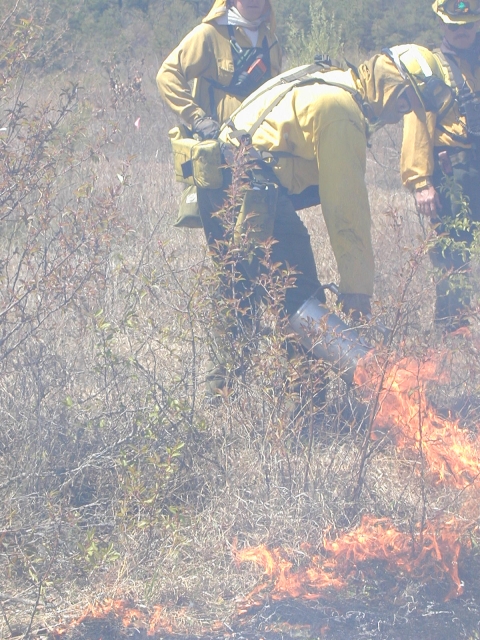What We Do
The most efficient and ecologically beneficial method to manage and restore the longleaf ecosystem is prescribed fire. Prescribe burns favor fire-adapted species in the canopy and increase sunlight on the forest floor. This encourages a native and diverse herbaceous layer which benefits wildlife through the production of various flowers, seeds, fruit, and insect habitat.
There are two types of burns that are conducted on the refuge. Growing season burns are done in the spring with hope of killing groups of small hardwoods. A dormant season burn is conducted during the winter. This type of burn is more for areas that have less litter cover, resulting in less smoke in the air. This can reduce the risk of more intense fires when it is dry while also reducing the competition of unwanted shrubs and invasive species invasive species
An invasive species is any plant or animal that has spread or been introduced into a new area where they are, or could, cause harm to the environment, economy, or human, animal, or plant health. Their unwelcome presence can destroy ecosystems and cost millions of dollars.
Learn more about invasive species .
Law Enforcement
Protecting resources and people on our refuges is the fundamental responsibility of refuge officers. The mission of the Refuge Law Enforcement Program is to support the administration of the National Wildlife Refuge System through the management and protection of natural, historic and cultural resources, property, and people on lands and waters of our national wildlife refuges.

